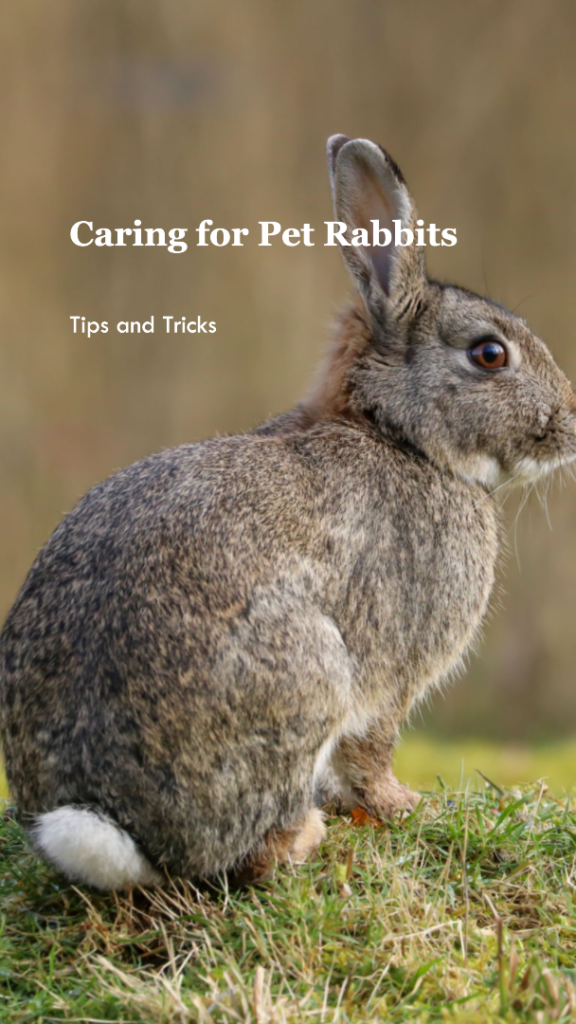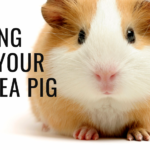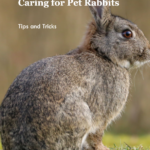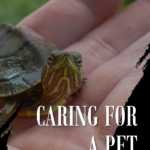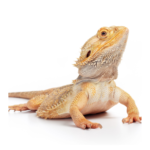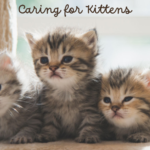Most people find bunny rabbits absolutely adorable. They are cute, fluffy and love to be cuddled. They can also be an indoor house pet and are low maintenance, making them an excellent pet for young and old.
The are many different breeds of rabbits available today. Dwarf and lop ear rabbits for example are becoming extremely popular as pets. Rabbits do make ideal pets, but they are often bought on impulse, or as a substitute for a child that wants a dog or a cat. You should only consider buying a rabbit if you are genuinely interested in rabbits. They live for up to 8 years (10 has been recorded for some breeds) and so consideration needs to be made for them long term when integrating them into the family.
Can be House Trained
They should not be purchased on impulse. If you are interested in rabbits, it’s best to do some research on the different breeds and work out what sort of rabbit will suit you and your lifestyle the best.
Rabbits can be house trained and therefore are ideal to keep inside. They can learn to use a litter tray in the same way as a cat, and are relatively clean animals. Whether in or out they will still need a hutch to sleep in at night. If your rabbit is not free to roam, then it should be let out of it’s hutch for at least an hour a day.
Once they feel comfortable and safe, a rabbit will explore and get into all sorts of mischief. If indoors, you will need to bunny proof your home. Rabbits will chew almost anything, remotes, skirting board, electric cords etc. Therefore it is important that they be supervised when they are allowed out, or the environment is completely safe for them.
Sensitive to Sound
They are also very sensitive to sound, rabbits like a quiet household with minimal activity. Some devices like computer screens and tv’s can upset or bother a rabbit even when they are off/standby. Loud TV and music are definitely disturbing and will cause stress.
Rabbits are excellent to cuddle and love to be held, however, they are a ground animal and don’t like to be picked up to our normal height. You should hold and play with your bunny at ground level, and support them properly so they feel safe.
They will interact with existing pets, but this depends on the personality of your existing animals. It is well known for rabbits to snuggle up to a dog or cat and be best friends. Unfortunately though, many dogs and cats may not be sociable to a rabbit, if so, the rabbit is sure to detect this and become stressed, even if your pets are kept apart. If a dog sits next to a rabbit hutch waiting to get in, the rabbit could die from stress.
Rabbits make excellent pets and will become a valued member of the family. Always keep your rabbit safe and it will reward you with love and adorable behaviour. If you don’t have enough time to spend with your rabbit, perhaps get a second one, as they are a sociable animal and require daily attention.
Basic Requirements
If you are about to get a rabbit, you need to make sure you have the basic requirements, before you even bring them home! Here is a list of the basic requirements for any rabbits.
- Rabbit Hutch
- Sawdust or Straw Bedding
- Ceramic Food Bowl
- Drip/Sip Water Bottle
Optional Requirements
- Harness & leash
- Wood Chews
- Salt & Mineral lick stones
Breakdown
Suitable For People Aged: 5 & over
Experience Required: None. Care sheet & info
Feeding Care Time Required: 20 minutes a day
Maintenance Time Required: 1/2 Hour Twice a Week
Minimum Space Required: Rabbit Hutch
Cost of Upkeep: (approx) $6 Per Week
Life Span: (approx) 5 to 8 years
Availability: All Year
INTRODUCTION
Some 50 varieties of rabbits have been developed from original wild rabbits in Europe and now they are available in many sizes and colours. Fossils, and stone age paintings in Spain suggest they originated in the Mediterranean and were spread to many countries by the ancient Romans who liked their meat. Queen Elizabeth I raised them as pets and started a fad. They came to Australia with the first fleet, and were abundant in Tasmania by 1882. In 1859 they were released near Geelong for sports. Nowadays they are classified as vermin and cannot be bred for meat or kept in large numbers. Despite their reputation in the wild (they are probably responsible for the extinction of some South Australian mammals) they make hardy and affectionate pets living for 4-10 years in captivity. As rabbits are a prey animal, they are timid by nature and need to feel secure and protected.
HOUSING
A large well ventilated cage or hutch at least 900 x 600 mm with strong base is required. It should also have an enclosed space that provides privacy to hide in. Although a cage or hutch is normally required to house your pet rabbits, they can be allowed to roam free in the house or garden. They can even be trained to use a litter tray similar to a cat. Be aware of any dangers should you let your rabbit roam the yard, smaller rabbits and dwarfs may be susceptible to attacks from cats or even a hawk!
A heavy feed dish will be required to hold feed so that it cannot be knocked over. Straw, wood shavings, newspaper or peat moss make good ground cover in a hutch. This will absorb any mess or spills, and should be cleaned and replaced on a weekly basis depending on how much the hutch is used. Other objects should be introduced also, to keep your rabbit entertained.
Wood chews, roots and twigs are ideal for gnawing, this keeps them entertained and also help prevent overgrown teeth. Water should also be provided, this should be available anywhere your rabbit is allowed to roam. In the cage or hutch you should use a drip/sip bottle. This keeps the water clean and fresh and it will last much longer than in a bowl.
FEEDING
The basis of a rabbit’s diet should be hay, vegetable, and pellets. Anything beyond this is considered a treat and should be fed in strict moderation. The digestive system of a rabbit is susceptible to upset if the diet is inappropriate, and this can be very serious. Pellets should be restricted, but it is vital to make up any reduction in pellets with a variety of fresh vegetables and unlimited access to hay.
Pellets are basically designed for commercial rabbit production. They are quite nutritious and energy dense. As a result, house rabbits fed as much as they like of pellets may end up with obesity and related health problems, as well as an excess of other nutrients. That is not to say that pellets do not have their place in rabbit nutrition, as they are rich in several nutrients and contribute to a balanced diet. However, it is important to restrict the amount given, and compensate for the decrease in pellets with fresh vegetables and grass hays.
Quality hay should be the mainstream diet and always available. A small hop for hay can be permanently mounted on their cage or hutch. Always make sure it’s full of fresh hay.
Vegetables should be introduced to bunnies around 12 weeks of age, in small quantities and one at a time. As more vegetable are added watch for diarrhoea and discontinue the most recently added vegetable if this occurs. Over time, the amount of vegetables fed is increased, and the amount of pellets decreased, so that by 1 year of age the adult feeding recommendations are followed. This should be unlimited hay, followed by vegetables, and supplemented with pellets. A small amount of fruit can be given for treats, along with other rabbit treats available from pet stores. Some interesting treats or chews your rabbit may like are apple tree twigs (check for pesticides), wood, cardboard, or willow baskets.
BREEDING
Sexually mature at 5-8 months, the young doe should be mtroduced into the buck’s hutch at 8-9 months (not vice versa as she is rather territorial). Pelvic bones harden- and so it is important for a doe to have her first litter whilst young. A doe’s oestrus cycle is 16 days and gestation takes 30 days. For several days before and after birth it is important not to disturb the doe. However, she will re-mate within a day or so of birth. Fresh straw and a dry nest box is important and can be given when you notice the doe begin to pull hair away from her nipples to expose them and use it to line the nest. The young must not be exposed to bright light (sensitive eyes) but can be weaned at 6-8 weeks. They will drink 1:1 water:milk and eat pellets.
HANDLING
Pick up gently but firmly by the scruff of the neck and support the hind legs. Rabbits will not usually urinate while held, but may scratch or even bite if insecure. Rabbits may bite or lick, as they like the salt in our skin. This can be reduced with a salt or mineral lick stone. Toenails may need an occasional clipping but rabbits clean
themselves regularly. You can still groom your rabbit regularly to keep them looking good, especially long haired breeds. Also, you can get a harness for your rabbit from most pet stores. This is handy when walking, or taking your rabbit somewhere.
GENERAL
Rabbits come in an amazing array of breeds with different colours, sizes, shapes and coat types. The subtle differences between breeds will be of most interest to those who show their bunnies. Still, for those choosing a pet rabbit, it is important to consider breed characteristics, especially size and coat type. Rabbits vary in size from the smaller dwarf breeds (at under 2.5 Ibs) to some of the giant breeds (sizes up to 16 pounds). Owners also need to be aware that the longer coated breeds need daily grooming.
Life expectancy varies from breed to breed, anywhere from 5 to 15 years. As a general rule, the larger breeds live longer.

